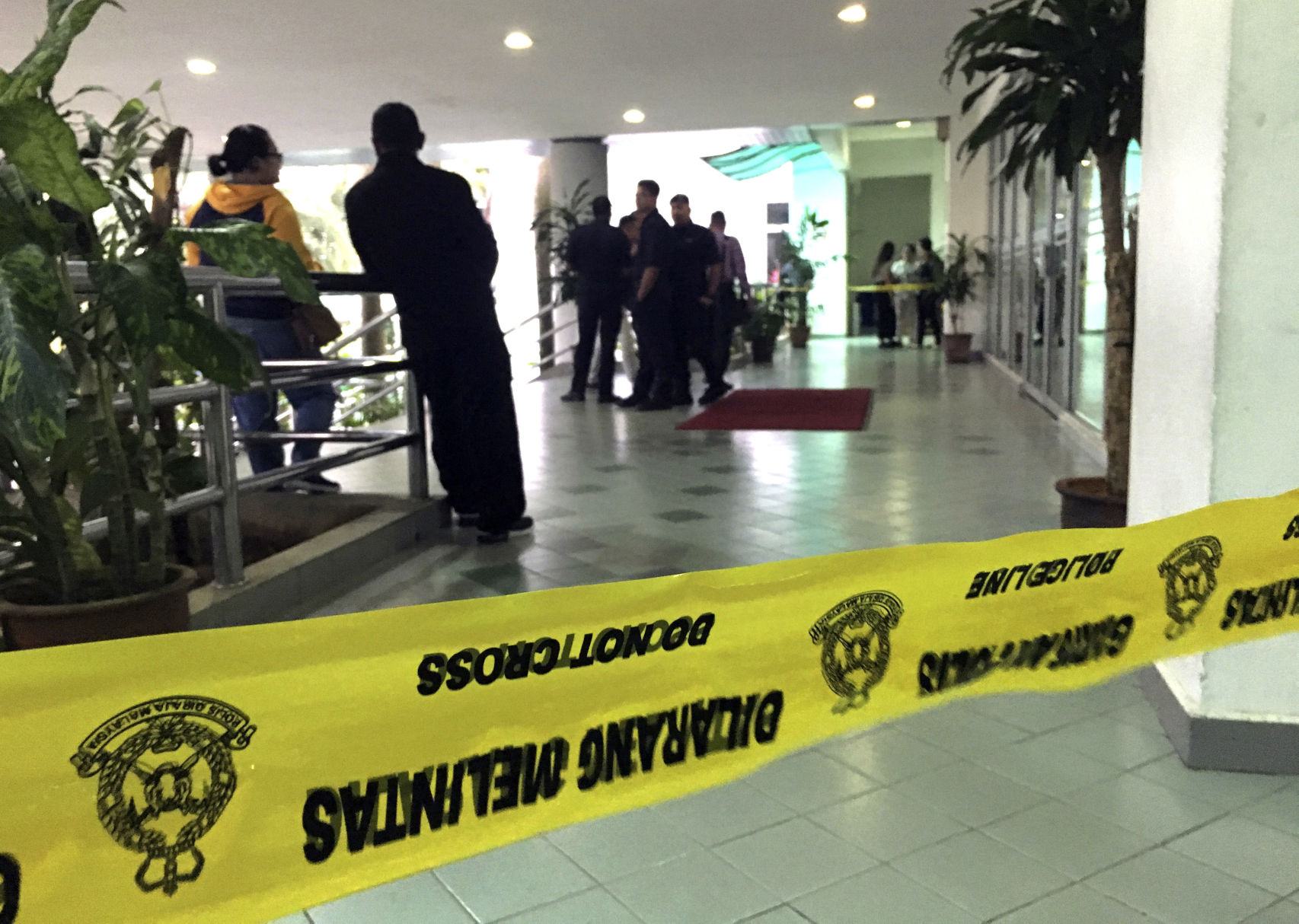SHAH ALAM, Malaysia (AP) — On the third day of the trial of two women accused of killing the estranged half brother of North Korea’s leader, defense lawyers sought to discredit the prosecution’s case, but it was the presentation of
SHAH ALAM, Malaysia (AP) — On the third day of the trial of two women accused of killing the estranged half brother of North Korea’s leader, defense lawyers sought to discredit the prosecution’s case, but it was the presentation of physical evidence that caused a stir.
Siti Aisyah of Indonesia and Doan Thi Huong of Vietnam have pleaded not guilty in the Feb. 13 murder of Kim Jong Nam using banned VX nerve agent at a crowded airport terminal in Kuala Lumpur.
The women have said they thought they were playing a harmless prank for a hidden-camera TV show and had been hoodwinked by men suspected of being North Korean agents. North Korean leader Kim Jong Un is believed to have considered his older sibling a potential rival for power.
A judge and court officials wore face masks and surgical gloves in Malaysia’s High Court as samples were admitted as evidence of where VX was found on Kim Jong Nam’s body and clothing.
Prosecutors and defense lawyers then took a 20-minute break to examine the samples, which were sealed in transparent plastic bags. Most wore gloves and masks as a safety precaution after prosecutors warned the VX-tainted items may still be dangerous.
DR. MOHAMAD SHAH MAHMOOD, head of the Forensic Unit at Kuala Lumpur Hospital
Mohamad Shah, who testified Tuesday that he believed Kim’s death was caused solely by “acute VX poisoning,” defended his finding, saying an expert chemist’s report had clearly shown the presence of VX, and that was supported by his autopsy.
Defense lawyers have contended that the conclusion Kim was killed by VX was biased and prejudicial to the accused, saying the autopsy findings and clinical symptoms merely showed chemical poisoning.
Mohamad Shah said toxicology tests found six types of drugs in Kim’s blood that are used to treat diabetes, hypertension and gout, but those drugs and the state of Kim’s health would not have caused his swift death.
Under cross-examination by defense lawyers, he admitted he had limited knowledge of VX and nerve agents in general. He said he didn’t know the amount of the poison that was used.
The defense lawyers also sought to cast doubt that VX was applied on Kim by the two women. They have said the defendants could not have carried out an attack with VX without being affected themselves.
Mohamad Shah agreed with a defense assertion that it would be tough to detect needle puncture marks on Kim’s body because he was heavily tattooed, but said there was only a “slim chance” of needle poisoning. He acknowledged he would not know if VX had been given to Kim through food and drinks before he arrived at the airport.
Mohamad Shah agreed that VX in its liquid form is tasteless, odorless and sticky, syrupy or oily, making it difficult to clean off so a person can be decontaminated.
DR. RANJINI SIVAGANABALAN, government doctor specializing in clinical toxicology
Ranjini said VX can cause excessive salivation, sweating, vomiting, seizure, pinpoint-size eye pupils and diarrhea.
She said decontamination usually involves washing with soap and water, but agreed with the defense’s assertion that this may not fully remove the poison, depending on the quantity applied.
The onset of VX poisoning is “very rapid,” with symptoms seen “usually within seconds or minutes,” Ranjini said. But if the dose is very low — and depending on temperature — it could take longer, she said, adding that VX may not be fatal at a very low dosage.
Ranjini disagreed with the defense’s assertion that as little as 10 milligrams of VX, just a tiny drop, would be lethal to humans, saying there has been no experimentation on humans anywhere.


